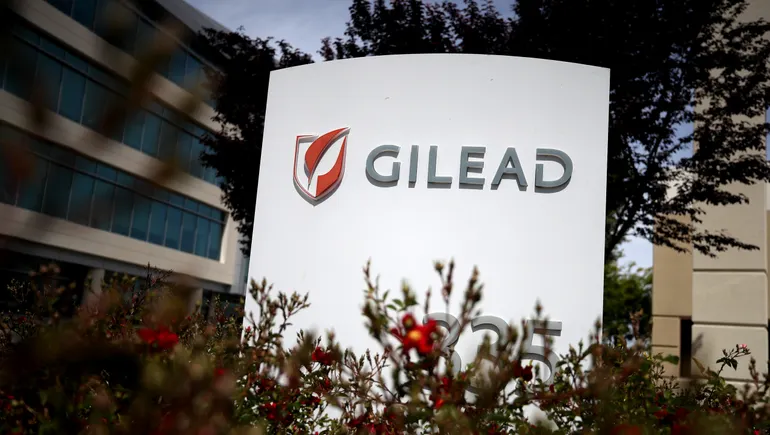How is C.H. Robinson turning things around? CFO Lee has a few ideas
C.H. Robinson CFO Damon Lee sat down with FreightWaves to discuss the company's turnaround. The post How is C.H. Robinson turning things around? CFO Lee has a few ideas appeared first on FreightWaves.

The stock performance of the few 3PLs that are publicly traded tells a stark story in the past 12 months.
RXO (NYSE: RXO), which in its most recent two quarters posted losses, is down about 31% in the past year. Landstar (NASDAQ: LSTR), which has yet to report its first-quarter earnings and is considered mostly a 3PL but with some unique characteristics, is down 25.5% during those 12 months.
C.H. Robinson (NASDAQ: CHRW), which a little more than a year ago was reported to be one of the most heavily shorted industrial stocks on Wall Street, is now five quarters into a turnaround that first showed signs of working with its first-quarter 2024 earnings. It’s up about 9.3% in the past year.
What’s notable about a C.H. Robinson earnings call over an even longer period than just the more successful recent five quarters is an absolutely consistent message: The Lean principles expounded by CEO Dave Bozeman, now almost two years into his role, are working and have kept the company ahead of the rest of the brokerage pack. Executives like Bozeman and others on the earnings calls do not waver from citing these new practices as the reason for a turnaround that, if an elevator speech needed to be given about it, can be told in three figures.
Sharp contrast from two years ago
In 2023’s second quarter, the last one before Bozeman took over, the company had gross profit of $656.7 million. In the first quarter just completed, the figure was almost identical: $657.4 million.
But the adjusted operating margin in Q2 2023 was 19.9%. In 2025’s first quarter, it was 26.3%. Diluted earnings per share two years ago in the second quarter was 81 cents. Most recently, it was $1.11 – $1.17 on an adjusted basis.
C.H. Robinson CFO Damon Lee, in an interview with FreightWaves several days after the release of C.H. Robinson’s earnings and its call with analysts, stayed on that message. “The easy part of answering that question about the reasons for our performance is in our strategy,” said Lee, who joined the company last year, just about a year after Bozeman took the top job. Neither had been in brokerage: Bozeman came out of Ford, Lee from GE.
The goals are not complicated, Lee said: “We’re going to grow our operating profit, and we’re going to do that by outgrowing the markets we participate in.” That 26.3% margin compared to two years ago is the most obvious factor. But the margin a year ago was 19.3%, and 700 bps points of operating margin improvement didn’t come from a stronger freight market.
“That strategy, as simple as it is, has really guided us through not just a transformation from a Robinson perspective but through one of the most difficult freight markets on record.” Lee said.
C.H. Robinson and RXO management both compared different parts of their performance to the monthly indicators of the Cass Index, though they did not highlight the same comparisons.
Avoiding ‘bad behaviors’
But benchmarking against the overall market represented by Cass, Lee said, is necessary. “If your strategy isn’t pegged to what the overall market is doing, you can find yourselves getting into bad behaviors,” he said.
Lee cited an overarching example of a “bad behavior”: “Where you overindex to volume at the sake of margins, and when that doesn’t work the way you expected it to, you overindex to margins at the sake of volume.”
The Lean principles that Bozeman and Lee both tout as key to the turnaround at C.H. Robinson have been described as having five points: Define value, map the value stream, create flow, establish pull and pursue perfection.
No company would say it doesn’t follow those principles. But when Lee was asked to give an example of how it might work at C.H. Robinson, he turned to the role of automation.
“I’ve gone through Lean transformations and it’s not a one-year journey,” Lee said. “It’s not a two-year journey. Typically, around year three is where you end up with the personnel that’s going to take you to the next level of evolution.”
Some of it is culture, Lee said: “I have to find a way to get better every single day, every single week, every single month.”
Will the customer pay?
But then he got specific. Applying Lean principles to C.H. Robinson’s activities would start with a question, he said: “What is a customer willing to pay for?”
“If you think about all of these steps that we do for a customer, there’s only a handful of them,” Lee said. “They’d say, ‘I’m willing to pay for that and I’m willing to pay for that.’”
Bringing Lean into the process, he added, would identify those services that are necessary but for which a customer is not willing to fork out money. The Lean solution, according to Lee: “We need to find a way to automate them.”
“Either eliminate the process altogether, because it’s not value add in the eyes of the customer, or find a way to simplify the process, by eliminating steps or automating the process altogether” is how Lee summed up the philosophy of Lean and how it might work at a 3PL.
It goes to a bigger goal under Lean, which he defined as, “We want our people spending their time on what the customer values versus what the customer doesn’t.”
The specifics of automating some of the processes – or even ones that customers actually want and need, like price quotes – were spelled out in the company’s earnings call by Arun Rajan, C.H. Robinson’s chief strategy officer. He said on the call that AI agents have performed more than 3 million “shipping tasks,” which includes more than 1 million price quotes and processing of a similar amount. It has also been “quickly scaled” in the C.H. Robinson LTL business, he said.
The people who have been implementing the job on the ground have fallen into three categories, Lee said. “You had some that were very excited that this was kind of a new day for C.H. Robinson,” Lee said.
Another group was cautious: “Were they in the right boat?” is how Lee described their attitude. But that group, Lee said, “just needed to learn more about how to be successful in this new Robinson.” The result so far, he added, is, “I think they’ve grasped what we’re trying to do with the company.”
And then there was a third contingent. As Lee described it, “They said, ‘This is not for me and is not really something I want to participate in.’” Many in that category have left the company, Lee said, “but there are some that are still around and working through how they can get to the middle and can they move to the left?”
Any gains a company makes by internal procedures can often run up against the reality that they can only go so far. If the market served is weak, that will ultimately impact the company’s performance no matter the level of company efficiency.
That’s one way of looking at it. But that’s not how Lee sees things.
“It’s something we debate all the time internally,” he said. “There is really no limit on how long we can continue this.”
The C.H. Robinson strategy under Bozeman is “set up and established, and the foundational elements are to perform regardless of the market trend we’re in,” Lee said. “That same set of principles and foundational elements translates to midmarket and peak market as well.”
More articles by John Kingston
For the first time in years, C.H. Robinson’s debt rating is downgraded by S&P Global
California deal with 16 states would end key parts of Advanced Clean Fleets rule
2 markets in 1 quarter: Auto-hauling demand volatile for Proficient
The post How is C.H. Robinson turning things around? CFO Lee has a few ideas appeared first on FreightWaves.



















































































































































